Are you looking for social activities for toddlers and preschoolers to build vital communication skills?
You know, those skills that are vital to your child’s overall development, happiness, and well-being. These social skills are more important than just sharing toys and taking turns; they’re about how our little ones interact, communicate, and build relationships.
So here’s the scoop: as parents, block-building enthusiasts, and exploration junkies, we’ve got a fantastic lineup of over 17 social skill activities for toddlers and preschoolers.
Let’s dive into these social development activities for preschoolers and toddlers that will inspire and nurture their skills!
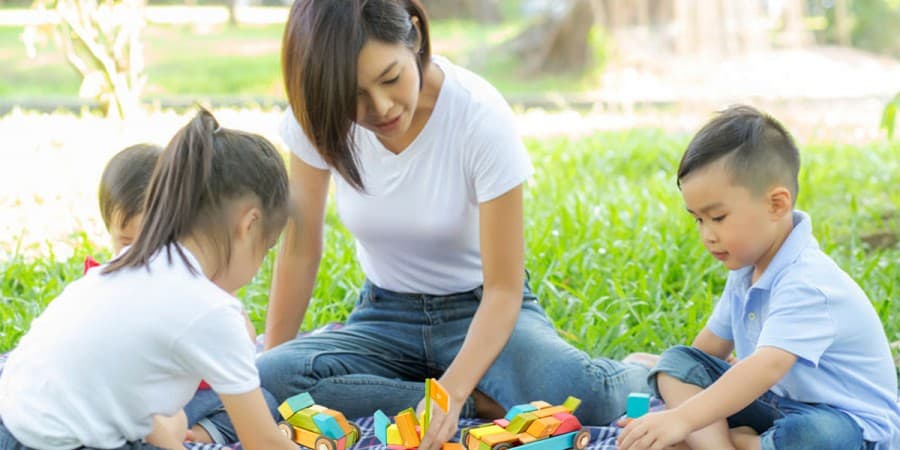
Play And Social Development
There is an incredible link between play and social development. As it turns out, all types of play are valuable to the social and emotional development in early childhood, including block play.
Through the stages of block play, children build skills in social-emotional, physical, language, and cognitive development domains. Read more about all the benefits of block play.
Kids love to play! Therefore, what better way to build their skills than to provide fun and interactive social skills activities for preschoolers and toddlers?
For a deep dive into social and emotional development in early childhood, read more on the importance of social skills.
Like little sponges, children learn best with hands-on activities. Additionally, through engagement and modeling, you demonstrate socially acceptable behavior.
At first, keep things simple. Then, when their skills develop, you can add more complex activities. Such as adding a twist to a classic game like Simon Says. The goal is to turn routine play into enhanced experiences. Always keep it fun and interactive!
Let’s look at some simple social-emotional activities for toddlers and preschoolers that you can incorporate into your child’s daily play.
Ideas For Social Skills Activities For Preschoolers And Toddlers
Use Visuals
- Posters
- Charts
Read Books
Read one of these on good manners:
- Thank You and Good Night by Jon Gordon
- Richard Scarry’s Please and Thank You Book by Richard Scarry
- Do Unto Otters: A Book About Manners by Laurie Keller
- My Mouth Is a Volcano! by Julia Cook
- Penguin Says “Please” by Michael Dahl
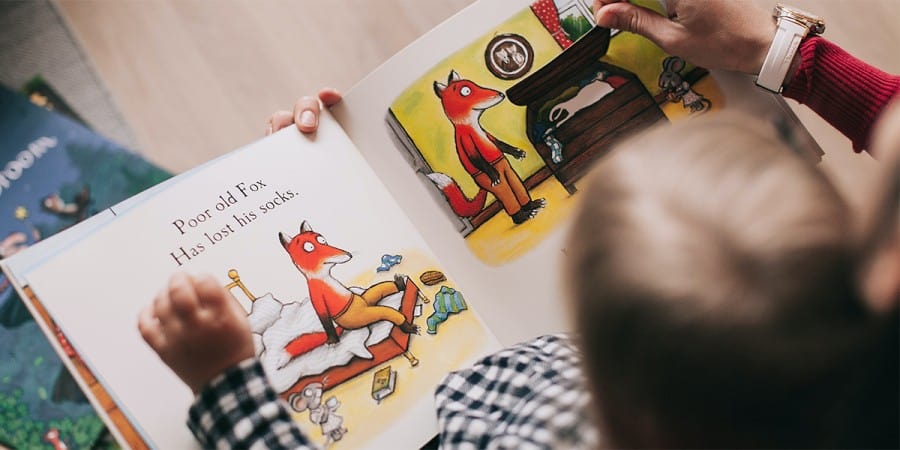
Sing Songs
Songs work wonders for kids. They love to sing and remember things much better when listening to music. It also works as a fun and gentle reminder; you can start singing the song when your child uses bad manners.
Sample one of these Good Manners Songs from The Child Care Lounge.
- Manners (Tune: I’m a Little Teapot)
- When You’re Talking to a Friend (Tune: If You’re Happy and You Know It)
- Good Manners (Tune: Twinkle, Twinkle Little Star)
Or this one from Let’s Play Music.
Finally, try a classic like “Your Happy And You Know It.”
Play Games
Playing games together, whether board, card, or outdoor, encourages following directions and taking turns. Children have to learn how to play fairly by the rules.
Additionally, it provides opportunities to handle winning and losing like a “good sport.” Practice taking turns with your child by saying “my turn” and “your turn.” Most importantly, focus on having fun while playing together.
Role Play
Create a list of things to say and then “role play.” For example,
- How to introduce themselves, i.e., “Hello, my name is…”
- How to join in playing with others, i.e., “May I play too?”
- How to nicely negotiate with others, i.e., No, thank you, I do not want the blue car. May I have the red truck, please?”
Social and Emotional Learning Skills
We will look at communication skills and social-emotional development activities for toddlers and preschoolers to build effective communication.
Communication
Effective communication is one of life’s most essential skills. Children need to understand and express their emotions while also recognizing the feelings of others. The need for positive interactions and connections with others is vital to our well-being.
Below are just a few of the skills used in positive communication:
- Active Listening
- Following Directions
- Making Eye Contact
- Using Good Manners
- Having A Sense of Humor
- Not Speaking Too Loudly
- Speaking Clearly
- Telling The Truth
- Using Kind Words
Active Listening
Good listening skills require children to be active listeners; they must hear and understand what someone else is saying. As the foundation for effective communication, being an active listener is a skill that is essential for healthy relationships throughout life.
“Listening is where love begins.”
Mr. Rogers
Practice is the name of the game! Try reading a book and stopping regularly to ask your child to recap the story. For instance, ask them, “What has been happening in the story?” Encourage them to continue listening as you read.
Epictetus, a Greek philosopher, said, “We have two ears and one mouth so that we can listen twice as much as we speak.”
Following Directions
Following directions and listening are two skills that work closely together. Kids frequently have difficulty following directions if they are not using their listening skills.
Younger children can get distracted or forget what you asked them to do. This is an opportunity to practice their skills. For example, practice regularly with simple requests like “Please pass the butter to me,” then praise immediately for following directions.
Also, you want to give just one direction at a time to young children. Instead of saying, “put on your shirt, wash your hands, and come to the table for dinner,” pause until they have put on their shirt before you give the next request.
Furthermore, how you frame the direction makes a difference. You want to avoid phrasing it like a question. Framing it as a question suggests your child has an option and can say “no.”
Instead, ask them to repeat what you said once you have given your direction. Having your child repeat the direction back to you also reinforces excellent listening skills.
It is important to praise your child when you see they are following directions. Say things like, “Thank you for putting your blocks away the first time.”
Making Eye Contact
Some kids may be shy and struggle to look at someone when speaking with them. However, eye contact is imperative to effective communication, and children need to practice it. Highlight the importance of making eye contact and model the behavior.
If your child finds it difficult not to look up, gently remind them by asking them, “Where do your eyes go when someone is talking to you? Always look for times to praise them when they remember to look at people when they are talking. You want to be kind and positive; shy children can often feel anxious.
Practice making eye contact with you first in a safe and loving environment. Have your child describe a story while you play with a toy, close your eyes, or look around, but NOT at them. Then, have them share another story; this time, make eye contact while they are speaking. Afterward, talk about how it made them feel in each instance.
Using Good Manners
Good manners are more than just minding your “Please” and Thank you.” It is about being polite and courteous, like not interrupting or talking with your mouth full.
Using good manners, whether at home or in public, is about respect. Greeting people like family, friends, or visitors with a “Hi” or “Hello” makes them feel welcome and appreciated. Let’s not forget the importance of “I’m sorry” and Excuse me.”
We realize that teaching good manners can feel like an endless battle. However, when your child is polite and courteous, others want to be around them. Furthermore, they are more likely to be invited to go places if they are respectful, gracious, and well-behaved.
So, how do we teach our children good manners? Model them! Always say “Please” and “Thank you” to your children and others. Give gentle reminders and praise them when they remember to be polite.
Better yet, practice with these fun social-emotional activities for preschoolers and toddlers below.
Social Skills For Toddlers Activities
Social skills activities for toddlers are usually quite simple. Typically, toddlers rarely play cooperatively before the age of three, but instead, they play alongside one another, enjoying each other’s company.
They are just beginning to engage in pretend play and like to imitate friends and adults. You see an increase in their independence, but they may still have some separation anxiety. Remember these general guidelines when planning your social-emotional learning activities for toddlers for successful interaction.
 Hands Are Not For Hitting
Hands Are Not For Hitting
Not hitting is a vital skill to learn, especially for toddlers. You can create a song about what hands are for, including hand motions. Add things like Hands are for waving, clapping, drawing, hugging, and more. Look for more ideas in the “Hands Are Not For Hitting“ book by Martine Agassi, Ph.D.

 Red Light, Green Light For Toddlers
Red Light, Green Light For Toddlers
To play, one toddler is the “stoplight,” and the others are bikes or cars. Let the kids decide. Next, the “stoplight” says “green light,” and all the bikes come running towards the light. When the light calls out “red light,” they all must stop. If they fail to stop, they return to the beginning and start over. The first one to the “light” wins and becomes the next “stoplight.”
 Follow My Clap
Follow My Clap
This game can expand as your child grows. For a toddler, start with a simple clapping pattern, have them listen, and copy the rhythm. As your child becomes more proficient, you can add other hand motions like slapping their knees for more complex patterns.
 Follow The Leader
Follow The Leader
Another classic perfect for all ages and learning to follow directions. Choose one person to be the leader. Due to language barriers, it might work best to be the leader initially or use physical cues with younger children. Have the leader “call out” or “act out” movements the kids must follow exactly.
 Simon Says
Simon Says
Not only one of the best games for teaching listening and following directions skills but also fun for all ages. You know how it goes, right? Someone gets to be “Simon” and gives directions to the other players. Let your child use their imagination and creativity; they could be “Spiderman” or “Batman.” How about “Anna” or “Elsa”? Maybe they want to dress up and get into character.
Next, they must listen to see if they are supposed to follow the instructions. For example, when “Simon says…” before the direction, the child follows the direction.
However, if they instruct without saying, “Simon says…” first, the child does not follow the directions. If you do, then you are out!
Remember to keep the directions age-appropriate. Start slowly and be sure they understand the instructions. For younger children, you may want to give visual cues. For instance, if you say “turn around,” then physically turn around.
 Loud Or Soft?
Loud Or Soft?
Here is another easy game to fine-tune your child’s listening skills. It requires them to focus and understand loud versus quiet sounds. Which is helpful down the road when you are asking them to use “soft voices.”
Start by making loud or soft sounds with various items, like loudly banging two blocks together. Then, ask the child if the noise was loud or soft.
In another version, you can have all the kids make noise, such as stomping their feet. First, have them do it loudly, and then the leader says, “soft,” and they stomp quietly.
Social Activities For Preschoolers
As your preschoolers’ skills increase, their social and emotional learning skills will become more complex. At this stage, they enjoy playing with other children rather than alone.
They are more creative and like to pretend, so now is a great time to add dress-up clothes and props for more imaginative play. Also, they want to try new things, so be creative and use your imagination when planning your social-emotional learning activities for preschoolers.
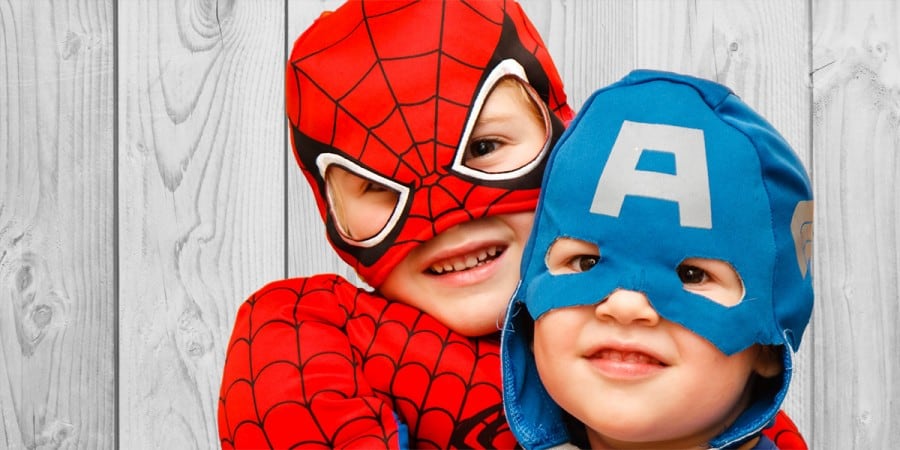
 What Sound?
What Sound?
This one can be a lot of fun to watch children express different sounds. First, have children sit back to back. One at a time, have them make a sound (like an animal sound) and see if the other person can guess the sound. Then switch.
 Follow The Rhythm
Follow The Rhythm
Create a pattern of sounds using musical instruments like drums or even pots and pans with wooden spoons. For instance, you bang on the drum three times. Then, have your child repeat what you did.
As the child’s proficiency increases, you can complicate rhythm patterns.
 Listening Activity With Blocks
Listening Activity With Blocks
Here is an easy and fun activity for one or more preschoolers to reinforce active listening. Start with a large container of big building blocks in various colors. Ask the first child to add “a blue block to the tower.”
Next, ask the second child to “add two green blocks to the tower.” Continue until you run out of blocks.
If the children listen well, you can increase the difficulty by adding more complex instructions. For example, “add one red block, one blue block, and two green blocks.”
 Obstacle Courses
Obstacle Courses
Kids love them! Not only do kids reinforce their listening and following directions skills, but they build gross motor skills, too! It is important to start small. Depending on your child’s age and ability, begin with 3 to 5 obstacles or tasks.
Here are some ways to focus on listening and following directions skills.
- Give them the exact directions on how to move through the obstacle course. For instance, if you use giant building blocks, tell them whether to go over, around, or knock them down.
- Incorporate a station where they must stop and listen for directions like “Simon says…” Once the task is completed, they can continue.
- Add a magnetic blocks station where they must build a pyramid.
Social Games For Preschoolers And Toddlers
Playing games offers many benefits. They encourage early learning, paying attention, and increasing language development. They provide opportunities to connect, step away from our screens, and teach the value of teamwork. Most importantly, they focus on having fun.
 Red Light, Green Light For Preschoolers
Red Light, Green Light For Preschoolers
A classic childhood game for preschoolers, with a twist. Once your child understands red means stop and green means go, you can increase the complexity by adding additional “light” colors. For example, “yellow light” for clapping, “blue light” for turning around, and “orange light” for jumping in place.
Or reverse the colors with “red light,” meaning go, and “green light,” meaning stop. These simple variations force them to listen more carefully.
 Mother, May I?
Mother, May I?
Another childhood favorite that requires following directions.
- One kid is the “mother” and stands far away, facing the line of children.
- “Mother” then chooses one child at a time and gives them a direction. Typically, these directions follow a standard, such as “Luke may take 3 giant steps forward” or “Hannah, you may take 4 baby steps forward”.
- The child then asks, “Mother may I?” and “mother ” replies yes or no. If the child forgets to answer, “Mother, may I?” they must return to the beginning.
- The first child to get to “mother” wins.
 Simon Says (try a twist of “Listen To What I Say And Not What I Do”)
Simon Says (try a twist of “Listen To What I Say And Not What I Do”)
You know how it goes, right? Someone gets to be “Simon” and gives directions to the other players. For preschoolers, you can add complexity by providing more than one-step instructions. For example, try “jump two times, clap your hands, and turn around.”
Remember, if they instruct without saying, “Simon says…” first, the child does not follow the directions. If they do, then they are out!
Here is a fun twist on the game for older preschoolers. This version, “Listen To What I Say And Not What I Do,“ requires kids to really focus their listening and NOT use visual cues. For instance, “Simon says…,: “run in place,” but he is jumping in place. Then the correct action is to “run in place.”
Here are a few fun commands to get the game started. “Simon says…”
- Play air guitar
- Waddle like a penguin
- Act like a monkey
- Bark like a dog
- Meow like a cat
- Start singing
- Start dancing
- Cry like a baby
- Pretend to climb a ladder
- Walk backward
 Build It! (A Variation On The “Teacher Says” Game)
Build It! (A Variation On The “Teacher Says” Game)
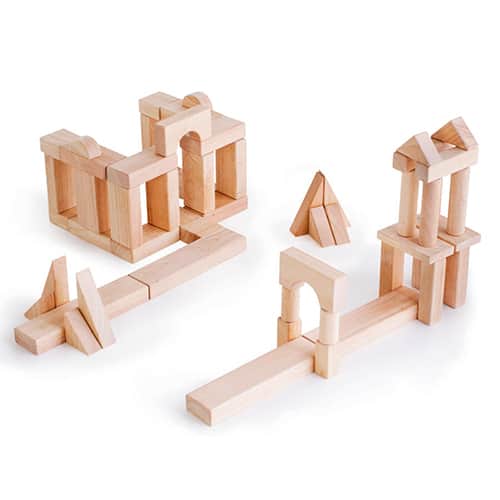
In this version, you play with blocks.
- Gather a bunch of wooden building blocks as props and place them in the middle of the room.
- Choose one child to be the “builder” and explain the game.
- Next, you are the “contractor” to model how the game is played. Continue in this mode until the kids fully understand how to play the game. Then, one of the kids can be the “contractor.”
- Finally, give the “builder” 2-4 directions, such as “line up two wooden square blocks, add one rectangle block on top, and one triangle block to the top.”
- As you play, show useful listening methods, like making eye contact with the speaker, repeating the directions, waiting for all the instructions before starting, and creating a picture in your mind.
 “Please” And “Thank You” Game
“Please” And “Thank You” Game
This game is a fun way to practice table manners before a special dinner like Christmas or Thanksgiving. Create make-believe food dishes to pass. Have your kids draw pictures of various dishes on the plates, such as mashed potatoes, broccoli, or pie. Then, glue the pictures to paper plates for passing. Also, you could cut them out of magazines or print them from the internet.
Here is how to play:
- Start with the first “dish.”
- Have the child name the food.
- Ask if they like it.
- If they do not like it, have them say, “No, thank you.”
- If they do, “Yes, please!”
- Afterward, they pass the plate to the next child, asking, “Would you like some________?
- The child can then respond with a “No, thank you” or a “Yes, please.”
- Continue until you have passed all the “dishes.”
Music and Dance Activities
Dance and music are not just fun for toddlers and preschoolers but also beneficial too! Music cultivates communication and allows kids to express themselves. Furthermore, it contributes to imagination and creativity.
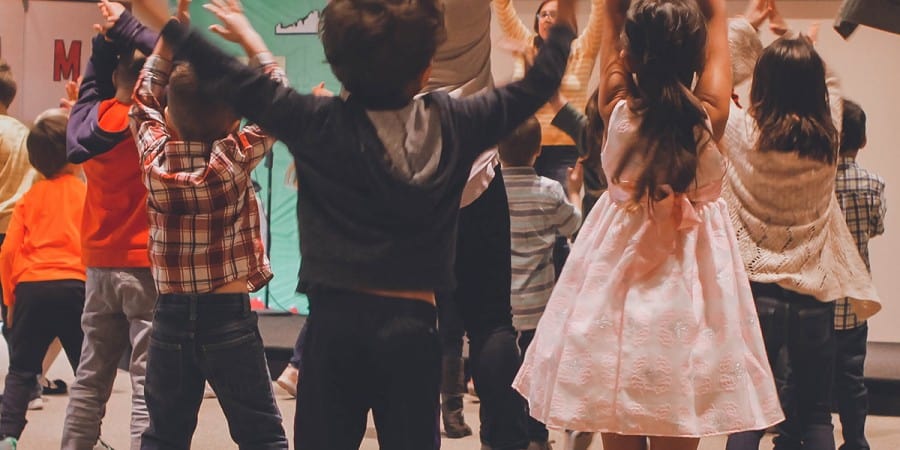
 Let’s Have A Dance Party!
Let’s Have A Dance Party!
This one starts with some music. Next, either an adult or a child may be the “dance leader.” The “leader” starts dancing, and everyone must follow the moves exactly. Make it fun and silly!
After about 30 seconds, but no more than a minute, the “leader” calls out another child’s name, and they become the next “dance leader.” Continue changing places until everyone has had a chance to be the “dance leader.” Beware, if you are caught not making the moves exactly, you will have to take a seat.
 Musical Chairs
Musical Chairs
Play a modified version of this classic game with age-appropriate music.
 Freeze Dance
Freeze Dance
Kids love nothing more than music and dancing! This one is simple and fun. Play some music, and the kids start dancing; once the music stops, they “freeze.”
You can also add some variations, like having them dance to the beat of the music, for instance, dancing slow motion to slow music and dancing fast to fast beat music. Or reverse it, dancing slowly to fast music and fast to slow music.
The Most Basic Of All Human Needs Is The Need To Understand And Be Understood. The Best Way To Understand People Is To Listen To Them.
Ralph G. Nichols
Easy social activities for toddlers and preschoolers are a fun way to help children learn how to listen, follow directions, and use good manners. Check out these block activities for toddlers and preschoolers for more development activities.
Are you still looking for more social activities? Try these easy social-emotional activities focused on exploring their feelings, cooperation, and friendship. Until then, we hope you enjoy your time together, playing and practicing.
